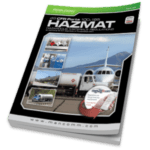
Flammable Liquid, class 3, is one of the broadest hazard classes because it includes a variety of chemicals—everything from paint, coatings, adhesives, hand sanitizers, jet fuel, and gasoline.
We know that a class 3 is material with a flashpoint less than or equal to 60°C (140°F). Class 3 materials are divided into three packing groups, represented as follows:

The United States 49 CFR has a unique classification called Combustible Liquid. A combustible liquid has a flashpoint of greater than 60°C (140°F) but not less than or equal to 93.3°C. Combustible liquids are only regulated in bulk (>119 gallons).
There are a number of exceptions outlined in the 49 CFR regulations for flammable liquids. These exceptions are found in CFR 49 Part 173.150. Of course, the most common would be limited quantity.
Another, not as common is found at 173.150 (f)(1). The regulations state the following:
(f) Combustible liquids. A flammable liquid with a flash point at or above 38 °C (100 °F) that does not meet the definition of any other hazard class may be reclassed as a combustible liquid. This provision does not apply to transportation by vessel or aircraft, except where other means of transportation is impracticable.
This means, if you have a product that is classified as a flammable liquid, packing group III with a flashpoint above 38°C, you can ship your non-bulk package as not regulated. This is because 49 CFR 150 (f)(2) says:
(2) The requirements in this subchapter do not apply to a material classed as a combustible liquid in a non-bulk packaging unless the combustible liquid is a hazardous substance, a hazardous waste, or a marine pollutant.
This exception could be beneficial to shippers, as they would not need a hazmat driver, nor would they pay the additional hazmat fee.
Are you interested in learning about more exceptions in the 49CFR or other regulations? Sign up for a training class or contact us on our helpdesk. As always, we are here to help.
Stay up to date by signing up for our newsletter!
We have all the products, services and training you need to ensure your staff is properly trained and informed.

|

Shipping Dangerous Goods by Ground |





